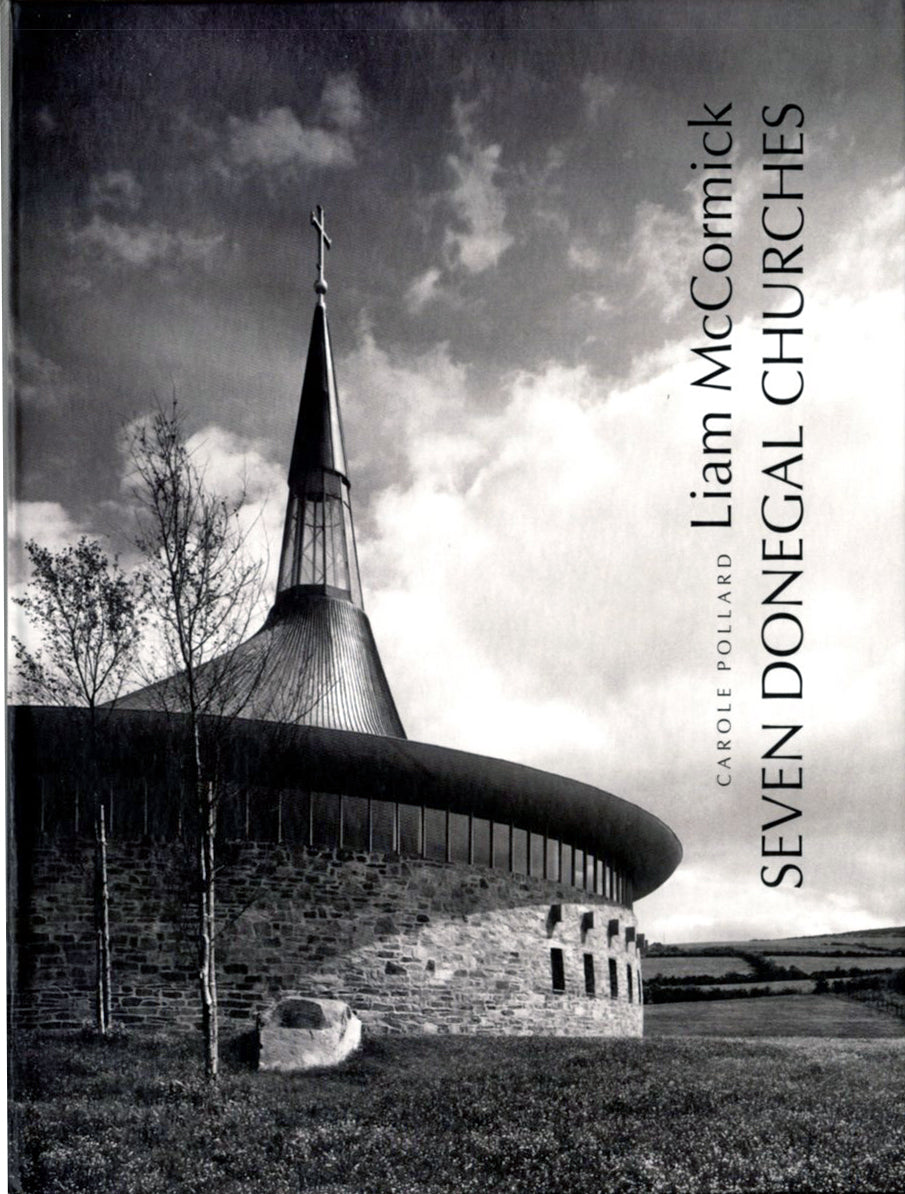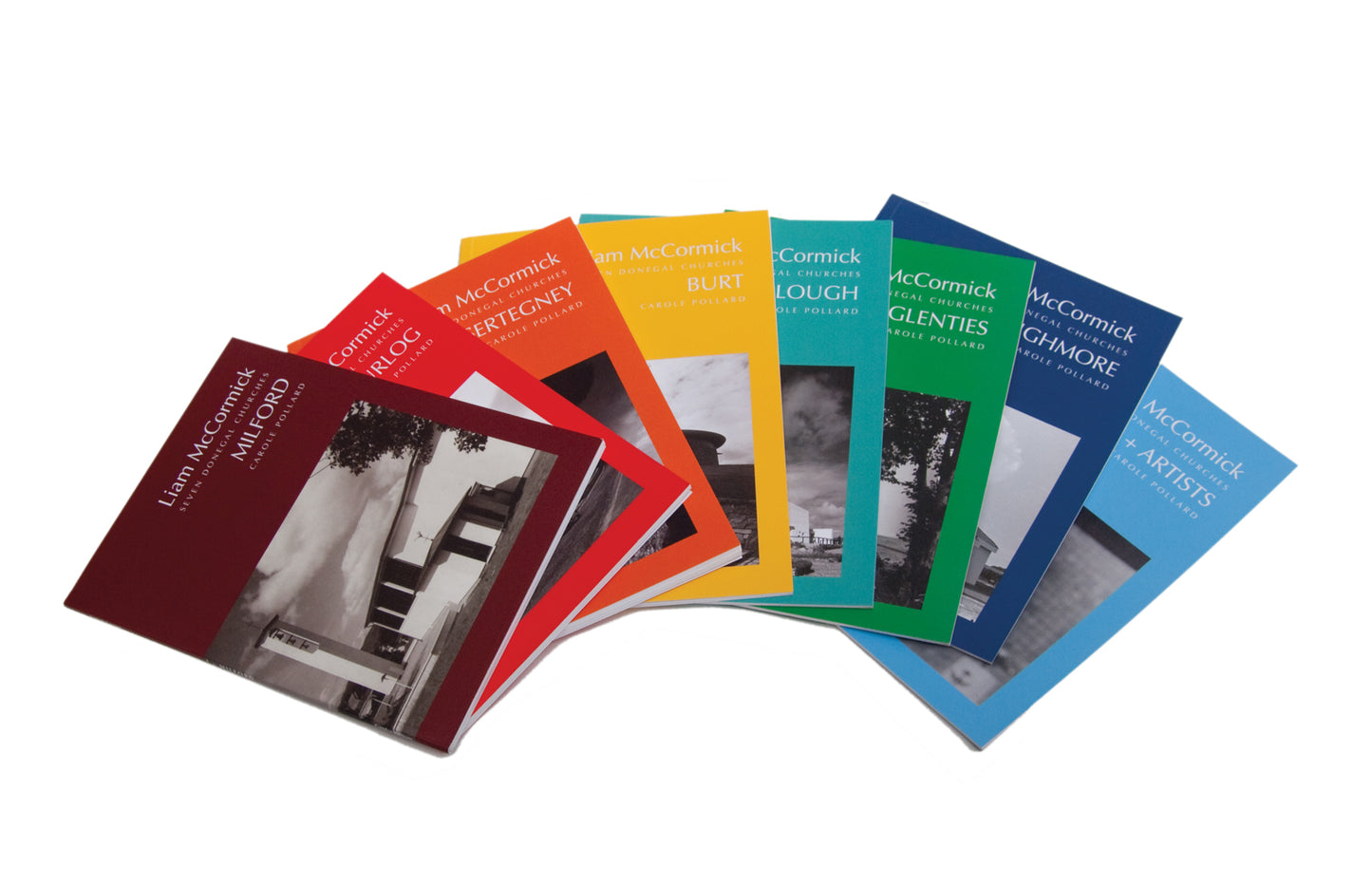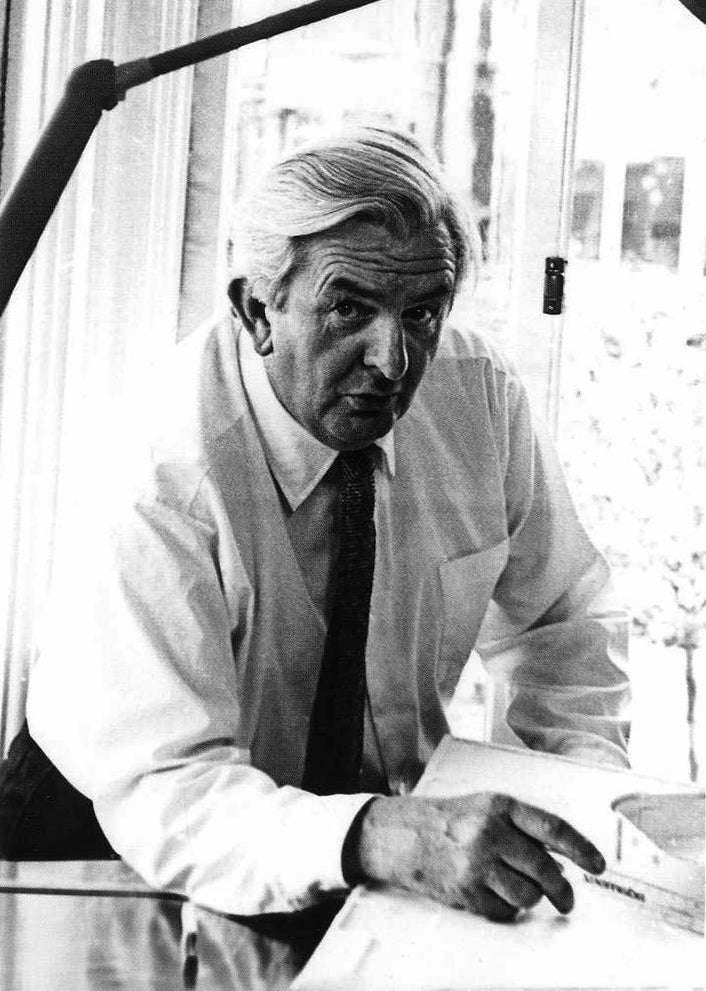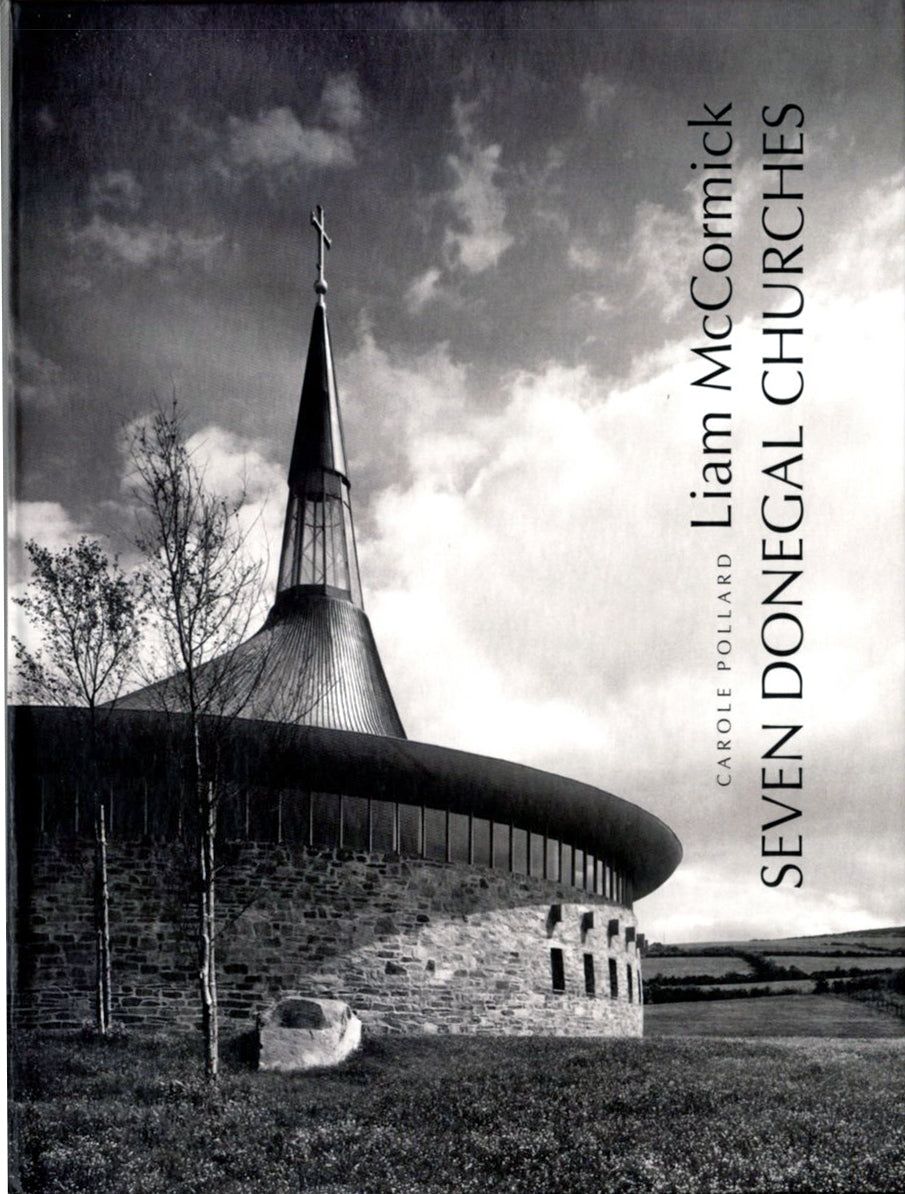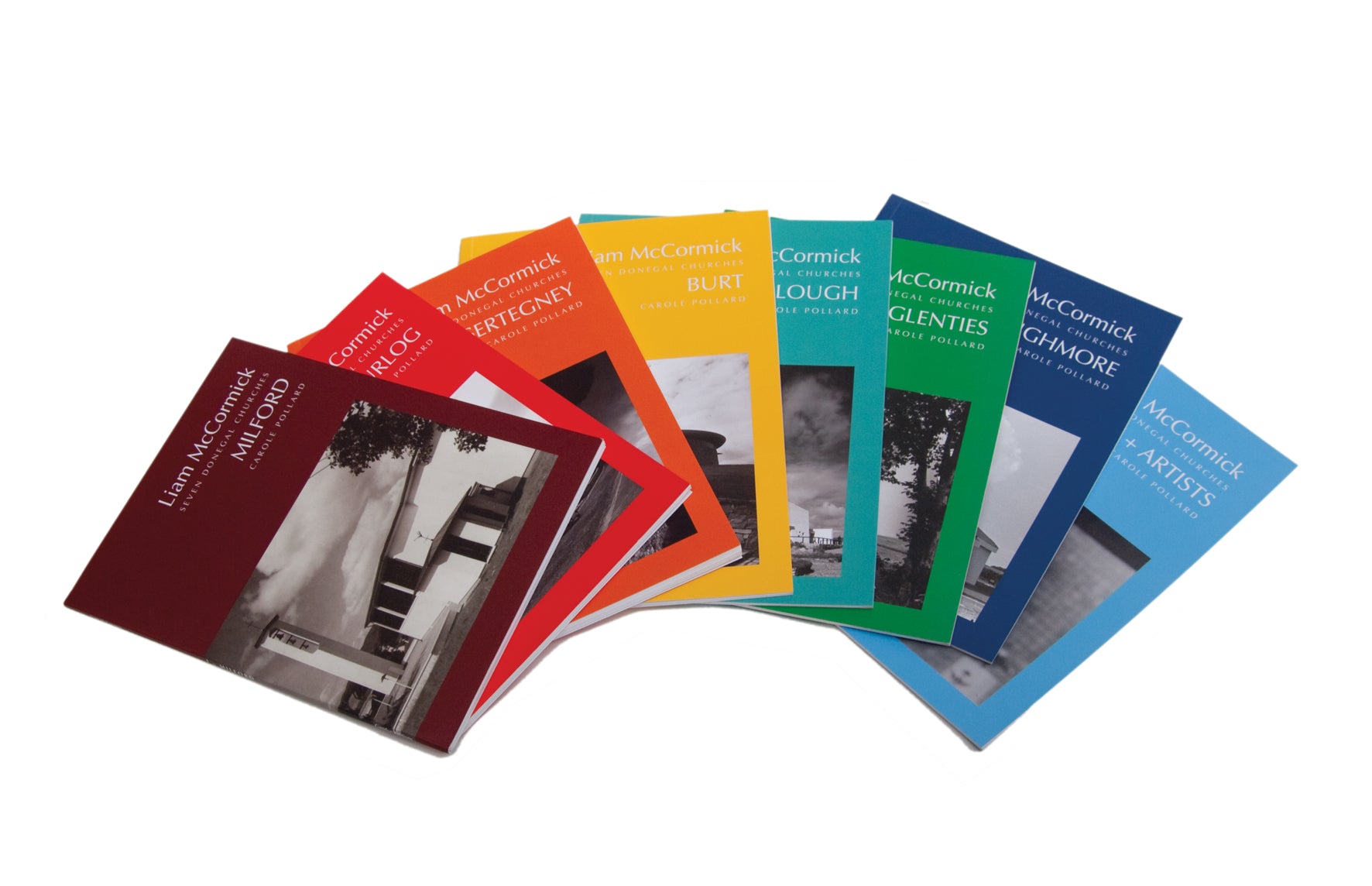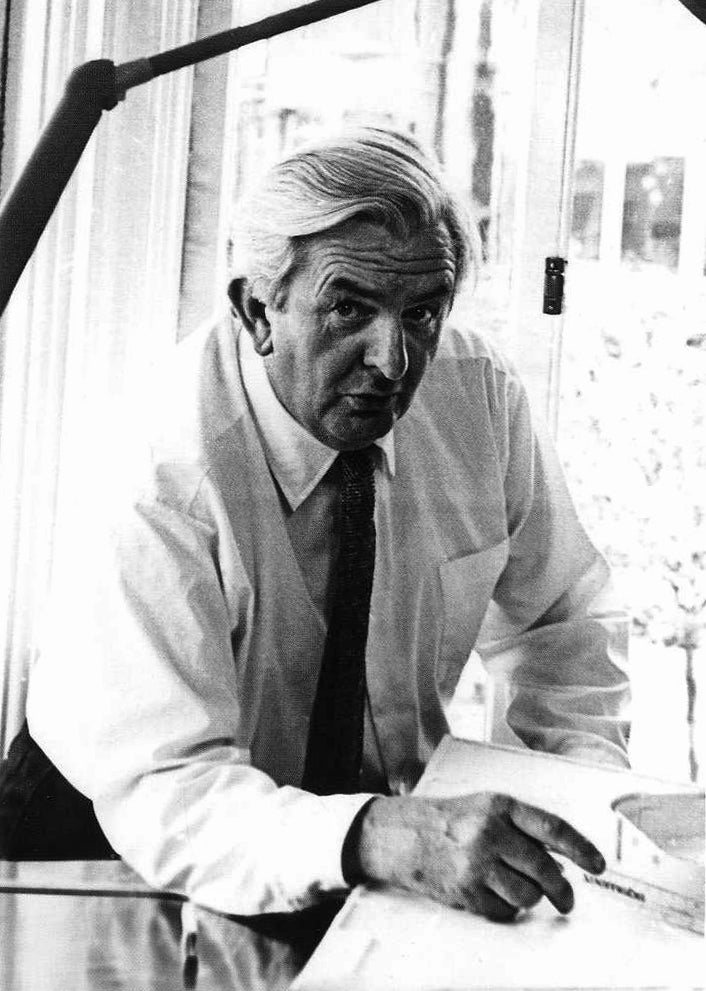Gandon
Liam McCormick — SEVEN DONEGAL CHURCHES
Liam McCormick — SEVEN DONEGAL CHURCHES
Couldn't load pickup availability
Share
by Carole Pollard
ISBN 978 0948037 962 264pp (set of 8 paperbacks) 20x15cm 277 illus
Between 1964 and 1974, Liam McCormick designed the three iconic churches that secured his lasting architectural reputation – Burt, Creeslough and Glenties, all in Co Donegal. McCormick’s seven Donegal churches – Milford (1961), Murlog (1964), Desertegney (1964), Burt (1967), Creeslough (1971), Glenties (1974) and Donoughmore (1977) – are an important group of buildings from an architectural, cultural, artistic, historical, religious and social perspective.
This series of 8 books, wrapped in a card cover, includes a volume on each church, setting out the background to the commission, the design of the church, the artworks, and the story of its construction. Later additions and alterations are also identified. Each book is copiously illustrated with photographs and architectural drawings. The eighth volume in the series outlines McCormick’s life and work, and includes biographies of the artists involved. All volumes include an additional essay on a related architectural topic by invited writers.
• also available as separate volumes
_____
EXTRACT
"It is interesting that McCormick acknowledges that where modern architecture has failed is in its overdependence on utility and function. This is particularly relevant to church architecture, which requires a special sensitivity. He says that modern architects have learnt a lesson from earlier failures: ‘We no longer believe in the omnipotence and validity of functionalism as such, but seek in our work the synthesis of a rational approach and artistry.’ He is all too aware of the special atmosphere that a church must have. It is place where people come to find peace and sanctuary, to worship. He is also aware of the liturgical changes that are taking place – changes that mean the congregation has a more active part in the ceremonies. Modern materials allow for the opening up of the structural space within the church, but McCormick warns that the intimacy of the space must not be lost. He particularly mentions the importance of light, natural light – ‘if the sun can play on it so much the better’. McCormick’s handling of natural light in his churches is one of his great achievements, and one that must be considered in any analysis of his buildings.
In order to enforce his point that modern church design must not lose the richness and detail that is required to create spaces of devotion and reverence, McCormick cites examples of where appropriate materials and good craftsmanship, combined with modern architecture, have produced churches that excite enthusiasm and pride. In his many travels around Europe, McCormick visited the important church buildings of the time, and there is no doubt that these European churches had significant influence on his designs. He also visited exhibitions of church art, and it is his view that the artworks within the church are integral to the success of the overall design. McCormick never wavered in these opinions throughout the course of his career."
— from the essay by Shane O’Toole (vol. °8)
|
CONTENTS °1 – Milford essays by CP, Catherine Croft °2 – Murlog essays by CP, Marianne O’Kane-Boal °3 – Desertegney essays by CP, William Cumming °4 – Burt essays by CP, John Graby °5 – Creeslough essays by CP, Paul Larmour °6 – Glenties essays by CP, Angela Rolfe °7 – Donoughmore essays by CP, Joy McCormick °8 – Architect + Artists essays by CP, Shane O’Toole |
published 2011
